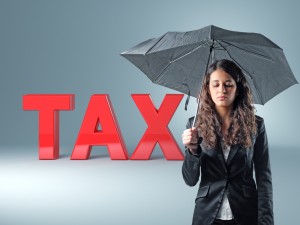Main Points Considered A New Zealand Citizen living in Australia, do they qualify for the First Home Owners Grant (FHOG) Also, can they qualify for the First Home Owners Stamp Duty Concessions What if they rent out the spare bedroom to help pay the mortgage? Scenario...
2015 Tax Rates & Thresholds Summary
Rates of Tax – 2014/15
 Resident Individuals
Resident Individuals
The following rates apply to individuals who are residents of Australia for tax purposes for the entire income year.
| Taxable Income1$ | Tax Payable2,3 |
| 0 – 18,200 | Nil |
| 18,201 – 37,000 | 19% of excess over $18,200 |
| 37,001 – 80,000 | $3,572 + 32.5% of excess over $37,000 |
| 80,001 – 180,000 | $17,547 + 37% of excess over $80,000 |
| 180,001+ | $54,547 + 47%4 of excess over $180,000 |
- The tax-free threshold may effectively be higher for taxpayers eligible for the low-income tax offset, the Seniors and Pensioners Tax Offset and/or certain other tax
- The above rates do not include the Medicare Levy (2% from 1 July 2014, previously 5%).
- As part of the 2015/16 Federal Budget, the government announced that, with effect from 1 July 2015, individual taxpayers with business income from an unincorporated business that has an aggregate annual turnover of less than $2 million will be eligible for a small business tax The discount will be 5% of the income tax payable on the business income received from an unincorporated small business entity. The discount will be capped at $1,000 per individual for each income year and will be delivered as a tax offset.
- This rate includes the 2% ‘Temporary Budget Repair Levy’ which applies from 1 July 2014 until 30 June 2017 on that part of a person’s taxable income that exceeds $180,000.
Non-resident Individuals
The following rates apply to individuals who are not residents of Australia for tax purposes for the entire income year:
| Taxable Income$ | Tax Payable1,2 |
| 0 – 80,000 | 32.5% of the entire amount |
| 80,001 – 180,000 | $26,000 + 37% of excess over $80,000 |
| 180,001+ | $63,000 + 47%3 of excess over $180,000 |
- Medicare Levy is not payable by non-residents.
- As part of the 2015/16 Federal Budget, the government announced that, with effect from 1 July 2015, individual taxpayers with business income from an unincorporated business that has an aggregate annual turnover of less than $2 million will be eligible for a small business tax The discount will be 5% of the income tax payable on the business income received from an unincorporated small business entity. The discount will be capped at $1,000 per individual for each income year and will be delivered as a tax offset. At the time of writing, no information was available regarding if and how this proposal applies to non-resident individuals.
- This rate includes the 2% ‘Temporary Budget Repair Levy’ which applies from 1 July 2014 until 30 June 2017 on that part of a person’s taxable income that exceeds $180,000.
Resident Minors – Unearned (Division 6AA) Income
The following rates apply to the income of certain minors (e.g., persons under 18 years of age on the last day of the income year who are not classed as being in a full-time occupation) that is not excepted income (e.g., employment income):
| Division 6AA Income$ | Tax Payable1,2,3 |
| 0 – 416 | Nil |
| 417 – 1,307 | 68% of excess over $416 |
| 1,308+ | 47% of the entire amount |
- The 2% Medicare levy is not included but may
- Resident minors are not entitled to the low-income tax offset in respect of ‘unearned’
- The effect of the 2% ‘Temporary Budget Repair Levy’ which applies from 1 July 2014 until 30 June 2017 has been included in the above
Non-resident Minors – Unearned (Division 6AA) Income
The following rates apply to the income of certain non-resident minors (e.g., non-resident persons under 18 years of age on the last day of the income year who are not classed as being in a full-time occupation) that is not excepted income (e.g., employment income):
| Division 6AA Income$ | Tax Payable1,2 |
| 0 – 416 | 34.5% of the entire amount |
| 417 – 663 | $143.52 + 68% of excess over $416 |
| 664+ | 47% of the entire amount |
- The Medicare Levy is not payable by non-residents.
- The effect of the 2% ‘Temporary Budget Repair Levy’ which applies from 1 July 2014 until 30 June 2017 has been included in the above
Pro-Rated Tax-Free Threshold – Non-residents
The tax-free threshold that applies to residents ($18,200 per annum in 2013/14 and 2014/15) is effectively pro-rated in an income year in which a taxpayer either ceased to be, or became, a resident for tax purposes. For the 2014/15 income years the pro-rated threshold will be calculated using the following formula:
$13,464 + ($4,736 x number of months taxpayer was resident for the year ÷ 12)
Genuine Redundancy Payments
The tax-free amount of a genuine redundancy payment in 2014/15 is $9,514 plus $4,758 for each completed year of service.
S.99 Assessment – Resident Deceased Estate
 The following rates apply where a trustee is assessed under S.99 of the ITAA 1936 in respect of a resident deceased estate. Where the date of death is less than 3 years before the end of the income year, the trustee is assessed as a resident individual.
The following rates apply where a trustee is assessed under S.99 of the ITAA 1936 in respect of a resident deceased estate. Where the date of death is less than 3 years before the end of the income year, the trustee is assessed as a resident individual.
| Taxable Income$ | Rate1% |
| Less than 3 years since death | |
| 0 – 18,200 | Nil |
| 18,201 – 37,000 | 19% of excess over $18,200 |
| 37,001 – 80,000 | $3,572 + 32.5% of excess over $37,000 |
| 80,001 – 180,000 | $17,547 + 37% of excess over $80,000 |
| 180,001+ | $54,547 + 47%2 of excess over $180,000 |
| 3 years or more since death | |
| 0 – 416 | Nil |
| 417 – 670 | 50% of excess over $416 |
| 671 – 37,000 | $127.30 + 19% of excess over $670 |
| 37,001 – 80,000 | $7,030 + 32.5% of excess over $37,000 |
| 80,001 – 180,000 | $21,005 + 37% of excess over $80,000 |
| 180,001+ | $58,005 + 47%2 of excess over $180,000 |
- Medicare Levy does not apply to S.99 assessments of deceased estate
- This rate includes the 2% ‘Temporary Budget Repair Levy’ which applies from 1 July 2014 until 30 June 2017 to the extent taxable income exceeds $180,000.
See list of typical occupational tax deductions for your job
Australian Homeowner Moving Overseas and Selling Their Principal Place of Residence (PPR) – Avoiding a $295,200 CGT Bill
Principal Place of Residence Exemption Loss if Sold While Overseas Summary of how the Principal Place of Residence (PPR) Exemption is impacted by moving overseas. When Australian homeowners move overseas and become non-residents for tax purposes, selling their...
Understanding Land Tax in Australia
Picture of a vacant block of land to illustrate it may be subject to land tax What is Land Tax? Land tax is a state and territory-imposed tax on the unimproved value of taxable land owned by individuals, companies, and trusts. It is calculated annually based on a...
Easier for Victoricans to build Granny Flats from December 2023.
Secondary Dwelling From December 2023 the Victorian Government has passed planning changes to make it easier to build Granny Flats - or "small secondary dwellings", on existing homes. The Victorian Premier Jacinta Allan revealed that planning permits will no longer be...
Property Investors to ensure income and expenses are correct.
The ATO is particularly targeting property investors that are not using the help of a specialist property tax accountant like Umbrella Property Accountant, due to the high error rate being discovered from ATO Audits. The ATO Audits into self-preparers have uncovered...
Residential Rental Caps & Vacancy Taxes will help supply for tenants?
Gold Coast - Example of the Housing Rental Competing Forces Many Apartments are sitting empty most of the year, including an entire beachfront tower. Gold Coast mayor Tom Tate cited an entire high-rise sitting empty in the triple tower Jewel development at Surfers...
Victorian Labour Government Land Tax Hikes to push up Rents
Victoria was the most locked-down state in Australia, if not the world during Covid, resulting in the Victorian Government accruing over $30 Billion in debt to keep the doors closed. Victorian Statement Government wants to raise $8.6 Billion over the next 4 years by...
Joint Venture(JV) Tax Considerations for Property Developers
Joint Venture tax understanding for property developers in Australia Joint Venture Agreement What is a (JV) for Property Development A joint venture (JV) is a cooperative agreement between two or more parties in which all parties contribute their resources (such as...
Umbrella Accountants March 2022 Newsletter, Property / Business Tax Tips
NDIS / SDA Housing GST Considerations NDIS / SDA Typically these types of residential investment properties are built to a much higher standard, but can also attract much higher returns in the order of 10% plus compared to 5% plus you could aim for with a good typical...
Rapid Antigen Test (RAT) Kits are tax-deductible?
Yes can claim the tax deduction for money spent on a RAT kit in the following cases: 1. You are required to take a test before undertaking work (e.g., as a mandatory requirement under an employer’s COVID mandate), or2. You are required to travel for work interstate...
February 2022 Newsletter Property & Tax
Property Price Increases and Tax? Property Prices Increase what about taxes? Residential properties values have increased in some cases over 30% in the last year, what does this mean for owners and investors? Family Home If the property being sold is the family home...



